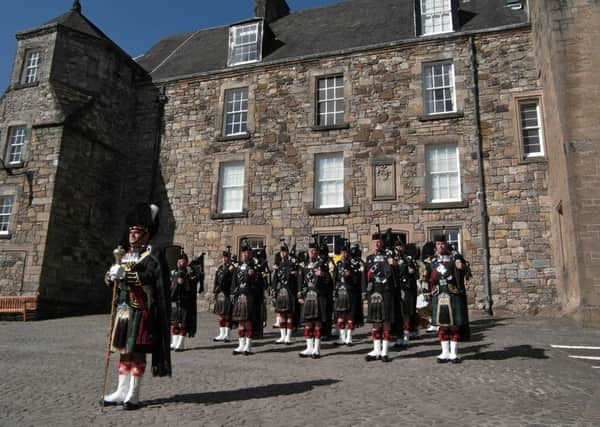Bruce Russell: Help us tell proud story of the Argyll & Sutherland Highlanders


The Argyll and Sutherland Highlanders Museum at Stirling Castle is part of Scotland’s especially rich endowment of regimental museums. Often housed in important historical buildings, these institutions have had enough of a story to tell - and enough interesting or moving artefacts to display - without straying too far into wider social, national or global history.
The Argylls’ Museum, one of Scotland’s most-visited regimental museums, under threat of closure following MoD cuts, is seeking sustainability by embarking on a two-year, £4 million renewal project, part-funded by the National Lottery Fund.
Advertisement
Hide AdAdvertisement
Hide AdAs well as recording our achievements and sacrifices, our aim is get visitors closer than ever before to an understanding of life in a great Highland regiment in all its aspects, as experienced by all ranks, and by the families and communities that provided its fighting men. We also want to rethink the regiment’s place in the social fabric of the nation, and the impact we made on the wider world in war and peace.
Founded in 1881 when the 91st Argyllshire Highlanders (raised at Stirling Castle in 1794) amalgamated with the 93rd Sutherland Highlanders (formed at Strathnaver in 1799), and recruiting from a uniquely wide swathe of Scotland from Clackmannanshire to Oban and the Isles, The Argyll and Sutherland Highlanders have a nationally important collection of militaria, art and archive material.
Our battle honours include Balaklava, the Boer War, two World Wars, the Korean War, Aden, and – our longest engagement – the peacekeeping operation in Northern Ireland. We will continue to display this legacy with pride. This year we will celebrate HM The Queen’s 70th Anniversary as Colonel-in-Chief of the Regiment and Patron of the Regimental Association.
Our conception of the new museum will encompass a ground-breaking conservation project. It will be based on more recent and immediate experiences, memories, photos, objects and documents. We plan to create a unique “living history” archive, through which veterans who have served in the regiment since Korea (1950-53) and their families can recreate the reality of regimental life - warts and all - through new media such as oral and video history.
We are appealing to former soldiers, members of the regimental association , their families and descendants to contact us to tell their stories and to share their letters, memories and artefacts.
The officers and men of The Argylls were drawn from a wide variety of Scottish backgrounds, from the crofts of Kintyre and the farmsteads and villages of Stirlingshire to the shipyards and engine works of Dunbartonshire and Renfrewshire. Our challenge is to capture all of that experience and to bring it to life for Castle visitors.
The first step is to understand what heritage exists within the community that can be used to tell The Argylls’ story. As a community museum with a strong educational remit, we aim to record, to give advice and, with the appropriate permissions, to use the material to tell the regiment’s story more fully, both at Stirling Castle and throughout the regimental heartlands.
With the help of the Regimental Association embedded in the Museum, we are looking for volunteers to help us make a record of all things Argyll-related that we can use in collaboration with local community groups.
Advertisement
Hide AdAdvertisement
Hide AdWe have a superlative collection here at the museum but there are gaps. For example we do not yet fully cover the peace-keeping operation in Northern Ireland from the 1960s to the 2000s.
If you have personal or family memories or material related to The Argyll and Sutherland Highlanders you would like to share with the Argylls Museum, please contact us at [email protected] or write to us at The Argyll and Sutherland Highlanders Regimental Museum, The Castle, Stirling FK8 1EH (01786 475165).
Brigadier Bruce Russell is Chairman of the Trustees of The Argyll and Sutherland Highlanders (Princess Louise’s).